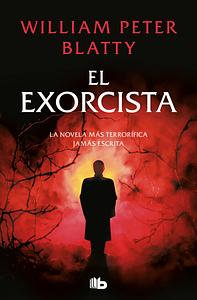Take a photo of a barcode or cover
challenging
dark
tense
fast-paced
Plot or Character Driven:
A mix
Strong character development:
Complicated
Loveable characters:
Yes
Diverse cast of characters:
No
Flaws of characters a main focus:
Complicated
This book haunts me.
dark
hopeful
sad
slow-paced
Plot or Character Driven:
A mix
Strong character development:
No
Loveable characters:
Yes
Diverse cast of characters:
No
Flaws of characters a main focus:
No
dark
emotional
mysterious
sad
tense
medium-paced
Plot or Character Driven:
A mix
Strong character development:
Yes
Loveable characters:
Yes
Diverse cast of characters:
Complicated
Flaws of characters a main focus:
Complicated
dark
tense
slow-paced
Plot or Character Driven:
Plot
Strong character development:
No
Loveable characters:
No
Diverse cast of characters:
No
Flaws of characters a main focus:
No
dark
mysterious
medium-paced
Plot or Character Driven:
A mix
Strong character development:
No
Loveable characters:
No
Diverse cast of characters:
No
Flaws of characters a main focus:
Yes
I remember this being the book that introduced me to a lifelong addiction to reading. This book wasn’t just scary, it was immersive storytelling of the highest order. Blatty sends you on a path of terror you can’t get away from. Nor would you want to!
8/10
This book is a masterpiece that I don’t feel comfortable recommending to anyone. This is because there are various instances in the book that I feel could be actively harmful for a person to read. Nevertheless, I don’t believe that any book should be censored or sugar-coated, and I believe that it is these very atrocities that make this book succeed so fantastically. It is clear to me that Blatty did copious amounts of research regarding possession, black mass, and exorcism. His intent for the demon seems to be painting a snapshot of unchained and unabashed evil. And the book excels at this, again, in some ways that hurt to read. Yet it was important for me to read. It is compelling and beautifully written.
The most frightening part about this novel to me is the level of depravity human beings are capable of. Blatty does not shy away from this as he displays scenes that are truly horrific not because they are scary but because the subject matter is morally grotesque.
There is some controversy, at least for me, in the fact that the demonic acts are being portrayed through the skin of a child. I believe this is what makes the “horror” horrifying. The episodes of possession that take place in this book would still be really bad if it were adults in the act, but having a little girl commit murder and engage in explicit behaviors is the next level for the surreal and the vulgarity of the demon. This what makes the demon work for me. This is the point of Pazuzu, to instill despair. Blatty does this by, again, juxtaposing the innocence of a child with the nonsensical desecrations of a beast. It works so well and I am truly disgusted by this book in many of the scenes. This is what makes the down-time throughout and the ending so good, though. The book simmers and broods and builds upon itself to breaking points that feel all the more potent because of the slow, methodic pacing.
It also helps that Blatty’s prose are extremely charming and clever.
The only character that fails to deliver for me is actually Father Merrin himself, who feels as if he was shoehorned into the story. He does fulfill a mentor roll for Karras in the midst of Karras’s self-doubt and faith-crisis, yet he only does this for the very last sliver of the book, making his death lack weight and meaning as we never got to truly feel for this character. Caveat, Merrin does deliver the most beautiful couple of lines in the book for me—the sermon on love (pgs. 311-313)—yet this isn’t enough to make me feel like he had a critical role to fill. Merrin is the titular Exorcist but Karras is the de facto exorcist.
Another thing that makes this story disturbing is the brilliant way in which Blatty never truly gives a concrete answer on whether or not this is truly a demonic possession or simply a psychiatric freak incident. It is strongly implied that there is truly a demon, Pazuzu, who is possessing this child, in which Father Merrin is mystically “summoned” back to America to exorcise. Yet, we are constantly being introduced to psychiatric science and very valid rational explanations to these occurrences. Okham’s razor is consistently referenced (the most simple, natural explanation is the best explanation). We are even given information on studies regarding Psychokinesis (using energies from the mind and body to effect surrounding physical objects). Think about this. The demon wasn’t even truly exorcised, it simply switched bodies (or became a traumatic breaking point for Karras in which he exhibited Reagan’s symptoms through autosuggestion) in which the new host—Karras—commits suicide, the demon enigmatically disappearing.
All of this leads to giving the cause of the novel’s events a brilliant underlying ambiguity, which in turn makes the final words of the novel hit heavy and still have a wistful hope to them.
Due to the exhaustion this book instilled in me as the reader and the thoroughly explored themes of grief, depravity, and love, the ending and reprieve feel earned and extremely cathartic. When the narrator gives the final line (in the midst of a light conversation between detective Kenderman and Father Dyer), “In forgetting, they were trying to remember”, I am satisfied. Just as this story was a slow burn until the darkest point of a life, like so will the bright points of life return through a slow burn. The dark is unforgettable, yet it can eventually be replaced and healed by remembering the light.
This book is a masterpiece that I don’t feel comfortable recommending to anyone. This is because there are various instances in the book that I feel could be actively harmful for a person to read. Nevertheless, I don’t believe that any book should be censored or sugar-coated, and I believe that it is these very atrocities that make this book succeed so fantastically. It is clear to me that Blatty did copious amounts of research regarding possession, black mass, and exorcism. His intent for the demon seems to be painting a snapshot of unchained and unabashed evil. And the book excels at this, again, in some ways that hurt to read. Yet it was important for me to read. It is compelling and beautifully written.
The most frightening part about this novel to me is the level of depravity human beings are capable of. Blatty does not shy away from this as he displays scenes that are truly horrific not because they are scary but because the subject matter is morally grotesque.
There is some controversy, at least for me, in the fact that the demonic acts are being portrayed through the skin of a child. I believe this is what makes the “horror” horrifying. The episodes of possession that take place in this book would still be really bad if it were adults in the act, but having a little girl commit murder and engage in explicit behaviors is the next level for the surreal and the vulgarity of the demon. This what makes the demon work for me. This is the point of Pazuzu, to instill despair. Blatty does this by, again, juxtaposing the innocence of a child with the nonsensical desecrations of a beast. It works so well and I am truly disgusted by this book in many of the scenes. This is what makes the down-time throughout and the ending so good, though. The book simmers and broods and builds upon itself to breaking points that feel all the more potent because of the slow, methodic pacing.
It also helps that Blatty’s prose are extremely charming and clever.
The only character that fails to deliver for me is actually Father Merrin himself, who feels as if he was shoehorned into the story. He does fulfill a mentor roll for Karras in the midst of Karras’s self-doubt and faith-crisis, yet he only does this for the very last sliver of the book, making his death lack weight and meaning as we never got to truly feel for this character. Caveat, Merrin does deliver the most beautiful couple of lines in the book for me—the sermon on love (pgs. 311-313)—yet this isn’t enough to make me feel like he had a critical role to fill. Merrin is the titular Exorcist but Karras is the de facto exorcist.
Another thing that makes this story disturbing is the brilliant way in which Blatty never truly gives a concrete answer on whether or not this is truly a demonic possession or simply a psychiatric freak incident. It is strongly implied that there is truly a demon, Pazuzu, who is possessing this child, in which Father Merrin is mystically “summoned” back to America to exorcise. Yet, we are constantly being introduced to psychiatric science and very valid rational explanations to these occurrences. Okham’s razor is consistently referenced (the most simple, natural explanation is the best explanation). We are even given information on studies regarding Psychokinesis (using energies from the mind and body to effect surrounding physical objects). Think about this. The demon wasn’t even truly exorcised, it simply switched bodies (or became a traumatic breaking point for Karras in which he exhibited Reagan’s symptoms through autosuggestion) in which the new host—Karras—commits suicide, the demon enigmatically disappearing.
All of this leads to giving the cause of the novel’s events a brilliant underlying ambiguity, which in turn makes the final words of the novel hit heavy and still have a wistful hope to them.
Due to the exhaustion this book instilled in me as the reader and the thoroughly explored themes of grief, depravity, and love, the ending and reprieve feel earned and extremely cathartic. When the narrator gives the final line (in the midst of a light conversation between detective Kenderman and Father Dyer), “In forgetting, they were trying to remember”, I am satisfied. Just as this story was a slow burn until the darkest point of a life, like so will the bright points of life return through a slow burn. The dark is unforgettable, yet it can eventually be replaced and healed by remembering the light.
mysterious
reflective
tense
medium-paced
Plot or Character Driven:
A mix
Strong character development:
Complicated
Loveable characters:
Yes
Diverse cast of characters:
N/A
Flaws of characters a main focus:
Complicated
dark
mysterious
tense
medium-paced
Plot or Character Driven:
Character
Strong character development:
Complicated
Loveable characters:
Yes
Diverse cast of characters:
Yes
Flaws of characters a main focus:
No
This author loves semicolons more than life itself. You can see where the editor gave up a few chapters in and they start making their way into dialogue too.
Anyway, this is Good Catholic Horror. The pacing is excellent, the characters are easy to like, or at minimum are fun to read about. It is scary, but more in a “I’m scared for you” way than an “I’m scared” way. It’s exactly the right amount of graphic for what it is.
Anyway, this is Good Catholic Horror. The pacing is excellent, the characters are easy to like, or at minimum are fun to read about. It is scary, but more in a “I’m scared for you” way than an “I’m scared” way. It’s exactly the right amount of graphic for what it is.




